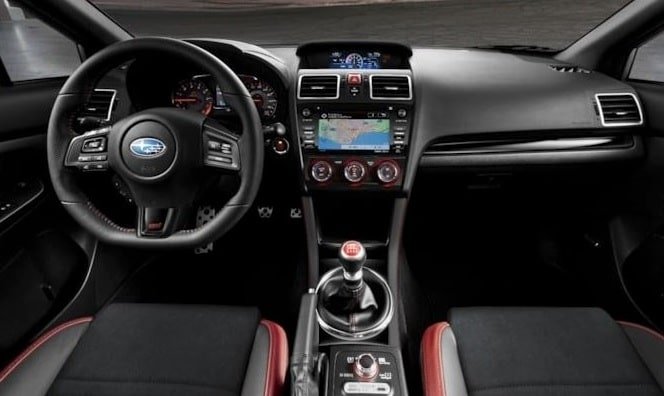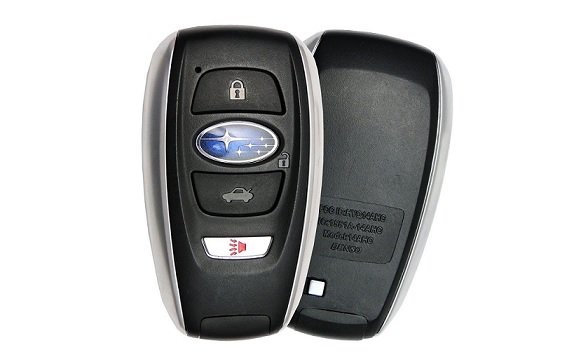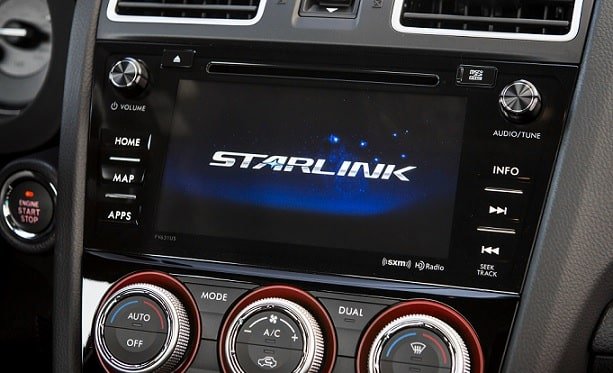A pair of wiper blades might be all you need to stay safe on the road in bad weather. Are they that important? Of course, they were designed to rid your windshield of rainwater, snow, dirt, and debris.
Imagine you were on the road in a hurry to meet up with a client and a heavy downpour begins. This shouldn’t be a problem until you flick on your wipers and they aren’t working or they leave terrible streaks on your windshield. Now, you have to slow down because you cannot see properly. Go any faster and you could be risking your life.
Would you want that to happen? Nobody would. This is why you need to pay some more attention to your wiper blades. One important factor to consider when replacing wiper blades is their size. Do you know the wiper blade size of your Subaru Forester? The Subaru Forester Wiper Blade Size chart below should help you out.

- 2018 Subaru Forester Wiper Blade Size
- 2017 Subaru Forester Wiper Blade Size
- 2016 Subaru Forester Wiper Blade Size
- 2015 Subaru Forester Wiper Blade Size
- 2014 Subaru Forester Wiper Blade Size
- 2013 Subaru Forester Wiper Blade Size
- 2012 Subaru Forester Wiper Blade Size
- 2011 Subaru Forester Wiper Blade Size
- 2010 Subaru Forester Wiper Blade Size
- 2009 Subaru Forester Wiper Blade Size
- 2008 Subaru Forester Wiper Blade Size
- 2007 Subaru Forester Wiper Blade Size
- 2006 Subaru Forester Wiper Blade Size
- 2005 Subaru Forester Wiper Blade Size
- 2004 Subaru Forester Wiper Blade Size
- 2003 Subaru Forester Wiper Blade Size
- 2002 Subaru Forester Wiper Blade Size
- 2001 Subaru Forester Wiper Blade Size
- 2000 Subaru Forester Wiper Blade Size
- 1999 Subaru Forester Wiper Blade Size
- 1998 Subaru Forester Wiper Blade Size
- Types of Wiper Blades
- Standard wiper blades
- Flat wiper blades
- Hybrid wiper blades
2018 Subaru Forester Wiper Blade Size
- Drivers side: 26 inches
- Passenger side: 17 inches
- Rear: 14 inches
2017 Subaru Forester Wiper Blade Size
- Drivers side: 26 inches
- Passenger side: 17 inches
- Rear: 14 inches
2016 Subaru Forester Wiper Blade Size
- Drivers side: 26 inches
- Passenger side: 17 inches
- Rear: 14 inches
2015 Subaru Forester Wiper Blade Size
- Drivers side: 26 inches
- Passenger side: 17 inches
- Rear: 14 inches
2014 Subaru Forester Wiper Blade Size
- Drivers side: 26 inches
- Passenger side: 17 inches
- Rear: 14 inches
2013 Subaru Forester Wiper Blade Size
- Drivers side: 24 inches
- Passenger side: 18 inches
- Rear: 14 inches
2012 Subaru Forester Wiper Blade Size
- Drivers side: 24 inches
- Passenger side: 18 inches
- Rear: 14 inches
2011 Subaru Forester Wiper Blade Size
- Drivers side: 24 inches
- Passenger side: 18 inches
- Rear: 14 inches
2010 Subaru Forester Wiper Blade Size
- Drivers side: 24 inches
- Passenger side: 18 inches
- Rear: 14 inches
2009 Subaru Forester Wiper Blade Size
- Drivers side: 24 inches
- Passenger side: 18 inches
- Rear: 14 inches
2008 Subaru Forester Wiper Blade Size
- Drivers side: 22 inches
- Passenger side: 19 inches
- Rear: 14 inches
2007 Subaru Forester Wiper Blade Size
- Drivers side: 22 inches
- Passenger side: 19 inches
- Rear: 14 inches
2006 Subaru Forester Wiper Blade Size
- Drivers side: 22 inches
- Passenger side: 19 inches
- Rear: 14 inches
2005 Subaru Forester Wiper Blade Size
- Drivers side: 22 inches
- Passenger side: 19 inches
- Rear: 14 inches
2004 Subaru Forester Wiper Blade Size
- Drivers side: 22 inches
- Passenger side: 19 inches
- Rear: 14 inches
2003 Subaru Forester Wiper Blade Size
- Drivers side: 22 inches
- Passenger side: 22 inches
- Rear: 14 inches
2002 Subaru Forester Wiper Blade Size
- Drivers side: 22 inches
- Passenger side: 22 inches
- Rear: 14 inches
2001 Subaru Forester Wiper Blade Size
- Drivers side: 22 inches
- Passenger side: 22 inches
- Rear: 14 inches
2000 Subaru Forester Wiper Blade Size
- Drivers side: 22 inches
- Passenger side: 22 inches
- Rear: 14 inches
1999 Subaru Forester Wiper Blade Size
- Drivers side: 22 inches
- Passenger side: 22 inches
- Rear: 14 inches
1998 Subaru Forester Wiper Blade Size
- Drivers side: 22 inches
- Passenger side: 22 inches
- Rear: 14 inches
Types of Wiper Blades
Not everyone knows that there are different types of wiper blades. You probably used to step into a retail store and just ask for wipers without knowing the types. What you should know is that there’s a wide array of wiper blades. This post will show you some of the most popular of the lot. Without further ado, let’s check out some types of wiper blades.
Standard wiper blades
These wiper blades are also known as traditional or conventional wiper blades. They are what you will find on most old model vehicles because they maintain the original wiper blade design. Standard wiper blades share similarities with coat hangers in their design.
They have a metal frame with a hook-shaped wiper arm connected to this frame. The arm is the part that elevates off the windshield when you lift your wipers. This part of the wiper also holds the wiper blades that are made from another type of metal and covered at the edge with a rubber strip. The blade is the one that rids your windshield of different materials.
Standard wiper blades are pretty affordable and easy to install. They are also readily available since they are the most popular wiper blades on the market.
Flat wiper blades
Flat wiper blades are quite different from conventional wiper blades. Instead of the regular hanger-shaped design, they have more of a flat shape.
This class of wiper blades is very fast and you will find them in new model vehicles. They come with a new technology that allows them to conform more to the windshield of any vehicle regardless of the curvature. Flat wiper blades don’t have a metal wiper arm with a metal blade. What they have is a rubber strip covering a pressured metal strip. Because of this, the wiper blades have a flatter aerodynamic shape that increases their speed and makes them move faster.
Flat wiper blades are costlier than standard blades because of the materials used in their manufacture. They are not easy to install nor readily available like their conventional counterparts.
Hybrid wiper blades
If you are looking for a pair of wiper blades that lie in the middle of conventional and flat wiper blades, here’s what you need. Hybrid wiper blades, as their name implies, mix the features of both wipers discussed above. As such, they have a mix of the coat hanger and aerodynamic shapes.
The wiper blades present you with a smoother airflow that allows an even downforce throughout the length of the blade. There is a steel substructure beneath the plastic sheath of the blades to ensure efficiency and smooth delivery. Hybrid wipers are not as costly as flat wipers but are a little costlier than standard wipers.






